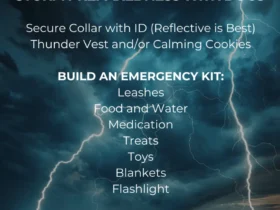
As temperatures rise during the scorching summer months, it’s important to remember that our four-legged family members are also vulnerable to the dangers of heat. Heat stroke in dogs can lead to severe health complications and even prove fatal if not addressed promptly. In this article, we will delve into the symptoms of heat stroke in dogs, offering insights into what you can do to keep your furry friend safe and optimize your search for crucial information.
Understanding Heat Stroke in Dogs: Heat stroke, also known as hyperthermia, occurs when a dog’s body temperature exceeds safe levels. Unlike humans, dogs cannot sweat profusely to cool down; they primarily rely on panting and a small number of sweat glands in their paw pads. When a dog’s body struggles to dissipate heat, it can result in heat stroke.
Common Symptoms of Heat Stroke in Dogs:
- Excessive Panting: Rapid, labored panting is one of the first signs of heat stress. If your dog’s panting becomes more pronounced and unrelenting, it’s time to take action.
- Heavy Drooling: Excessive drooling, often stringy and thick, is another indicator of a dog’s struggle to regulate its body temperature.
- Red or Pale Gums: Observe your dog’s gums; they might appear either bright red or abnormally pale, signaling a lack of oxygen circulation.
- Vomiting and Diarrhea: Heat stroke can lead to gastrointestinal distress, causing vomiting and diarrhea.
- Wobbly Gait or Weakness: Muscle weakness, stumbling, or difficulty walking can indicate a compromised state due to overheating.
- Rapid Heart Rate: An abnormally high heart rate is a clear sign that your dog’s body is under stress.
- Collapse or Seizures: In severe cases, heat stroke can lead to collapse, seizures, or even unconsciousness.
What to Do if You Suspect Heat Stroke:
- Act Quickly: Time is of the essence. Move your dog to a shaded, cool area immediately.
- Offer Water: Provide small amounts of water to drink, but avoid forcing large quantities.
- Cool the Body: Wet your dog with cool (not ice-cold) water and use a fan if available. Place cold, damp towels on your dog’s head, neck, and paw pads.
- Contact a Veterinarian: Even if your dog appears to be improving, it’s crucial to seek professional help immediately. Internal damage might not be immediately apparent.
- Avoid Overcooling: Rapid cooling can lead to shock. Aim to bring down your dog’s body temperature gradually.
As a responsible pet owner, it’s your duty to recognize and address the symptoms of heat stroke in dogs. Understanding the signs and taking swift action can make a life-saving difference. Remember, prevention is key: provide plenty of shade, fresh water, and never leave your furry friend in a parked car. By optimizing your search for accurate information, you empower yourself to act effectively and protect your beloved canine companion during the hottest months of the year.







Find Loves Dogs on Social